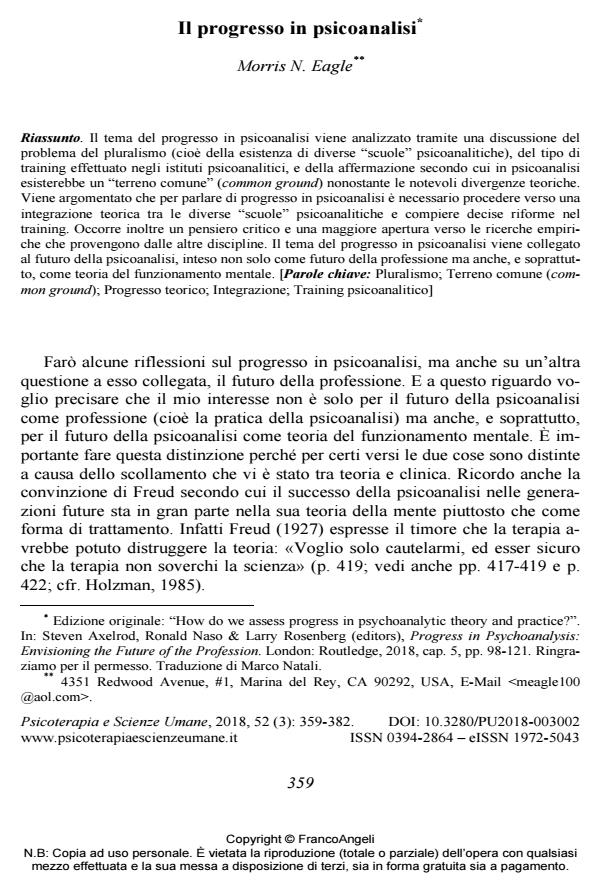Il progresso in psicoanalisi
Titolo Rivista PSICOTERAPIA E SCIENZE UMANE
Autori/Curatori Morris N. Eagle
Anno di pubblicazione 2018 Fascicolo 2018/3
Lingua Italiano Numero pagine 24 P. 359-382 Dimensione file 227 KB
DOI 10.3280/PU2018-003002
Il DOI è il codice a barre della proprietà intellettuale: per saperne di più
clicca qui
Qui sotto puoi vedere in anteprima la prima pagina di questo articolo.
Se questo articolo ti interessa, lo puoi acquistare (e scaricare in formato pdf) seguendo le facili indicazioni per acquistare il download credit. Acquista Download Credits per scaricare questo Articolo in formato PDF

FrancoAngeli è membro della Publishers International Linking Association, Inc (PILA)associazione indipendente e non profit per facilitare (attraverso i servizi tecnologici implementati da CrossRef.org) l’accesso degli studiosi ai contenuti digitali nelle pubblicazioni professionali e scientifiche
Il tema del progresso in psicoanalisi viene analizzato tramite una discussione del problema del pluralismo (cioè della esistenza di diverse "scuole" psicoanalitiche), del tipo di training effettuato negli istituti psicoanalitici, e della affermazione secondo cui in psicoanalisi esisterebbe un "terreno comune" (common ground) nonostante le notevoli divergenze teoriche. Viene argomentato che per parlare di progresso in psicoanalisi è necessario procedere verso una integrazione teorica tra le diverse "scuole" psicoanalitiche e compiere decise riforme nel training. Occorre inoltre un pensiero critico e una maggiore apertura verso le ricerche empiriche che provengono dalle altre discipline. Il tema del progresso in psicoanalisi viene collegato al futuro della psicoanalisi, inteso non solo come futuro della professione ma anche, e soprattutto, come teoria del funzionamento mentale.
Parole chiave:Pluralismo; Terreno comune (com¬mon ground); Progresso teorico; Integrazione; Training psicoanalitico
Morris N. Eagle, Il progresso in psicoanalisi in "PSICOTERAPIA E SCIENZE UMANE" 3/2018, pp 359-382, DOI: 10.3280/PU2018-003002